The ancient Chinese may well have been on to something (not surprising, given their greatest thinkers were clearly a smart bunch), for the idea behind the Chinese philosophical principle that’s ‘yin and yang’ – that is, the significance of balance and the importance of its attainment and maintenance – holds true to so many things in life and the world around us. Not least when it comes to our bodies and health. Indeed, when you think about healing – returning ill-health to a point of good (or ‘normal’) health – it’s summed up by the quest for balance within one’s body. Healing and good health then could be described as the need for balance within the human body.
In which case, it’s hardly surprising that when the body feels unhealthy it seeks to heal itself; when it feels out of balance, it seeks to rectify things and return to a balanced state. And one of the critical components it calls on and throws into action for this is oxygen. Research confirms that this most commonplace of chemical elements (especially in the body) is crucial not just for generating energy for the body’s cells via a process called cellular metabolism, but also for healing in injured tissues1. Indeed, wounded tissue likes nothing more than converting oxygen into what’s known as reactive oxygen species (ROS) to encourage this healing2. However, there is a downside to this; when the body is out of balance, reactive oxygen species – or, at least, the presence of too many of them in the body – can also be damaging to your health.
What are reactive oxygen species?
Why is this? Well, a clue comes in the form of what reactive oxygen species can also be referred to as – pro-oxidants or oxygen radicals. That’s to say, they’re a variety of free radicals. For many that like to keep fit and healthy, that term is likely to set alarm bells ringing; for free radicals can do a lot of damage in the human body, if left to do as they please in an ‘unbalanced’ body that’s not able to use them efficiently to heal tissue.
Specifically, a free radical is a molecule without an electron that, nevertheless, is capable of maintaining its structure. To that end, it spends its existence seeking out another chemical in the body with whom it can ‘pair’ and ‘complete itself’, by trying to gain that chemical’s electron. And, as far as reactive oxygen species are concerned, that chemical is oxygen, as that’s the one they’re naturally attracted to.
Forms of reactive oxygen species
Reactive oxygen species, though, are actually made of oxygen. To break it down, oxygen – an element comprising eight protons and eight electrons – isn’t averse to sharing its electrons (thus, it’s reactive), which is the problem. In sharing one electron or more there’s a good chance it won’t have them returned (which technically means it becomes an ion) and when it’s ionised like this it instantly seeks to replace its missing electron(s) – hence it becomes a reactive oxygen species and, yes, becomes dangerous and destructive. Indeed, strictly speaking, there are several different sub-divisions of reactive oxygen species:
- singlet oxygen – radical and harmful in two ways; this one can induce a cell’s genes to start ‘cell death’ and can oxidise lipids and fatty acids when it comes into contact with them3
- superoxides – much is still to be discovered about these forms of oxygen, but research suggests they like to disrupt the body’s ability to heal wounds and affect its destroying of cells4
- peroxides – in the body, these include the likes of hydrogen peroxide (comprising oxygen and hydrogen) and hypochlorite (oxygen and chlorine); they do good by helping to heal tissue5, but when hydrogen peroxide interacts with reduced metal ions the inevitable result are free radicals and, don’t doubt it, hydrogen radicals can be seriously destructive in the human body6
- hypochlorous acid – as you might expect, this form contains both oxygen and chlorine and via either oxidation or chlorination its are the destruction of target cells by disrupting their membrane structures7.
Combatting reactive oxygen species
So how do you go about fighting reactive oxygen species? How can you prevent them from doing all the damage they cause? A good idea to stop them would be by preventing them from being formed in the first place; cutting off the source before it can even do anything – surely that would be the ultimate answer; yes? Unfortunately, too often that’s simply not possible, as frankly, whenever you do, well, practically anything you actually create and use reactive oxygen species.
This is because they’re generated – via energy created by mitochondria in the body’s cells – every single time a muscle contracts; indeed, it’s been proved that high-intensity exercise actually causes their levels to increase, which in turn can bring about fatigue and muscle failure8. That said, they are also created thanks to the body absorbing harmful foreign entities – the likes of alcohol, germs, polluting chemicals, tobacco and its smoke and toxic metals9 – which is something that you can control; the lesson being then to try and avoid these entities as much as possible.
But beyond this there must be a more fundamental, proactive answer? There is – antioxidants. Defined as substances that inhibit oxidation, antioxidants are simply brilliant at neutralising the oxidising efforts of free radicals. And they’re to be found everywhere in the natural world around us. Indeed, the Vitamins A, C and E and the minerals copper, selenium and zinc are all blessed with antioxidant properties and you can get your fill of them by packing your diet with antioxidant-rich foods like blueberries, cranberries, elderberries, goji berries, artichokes, pecans, kidney beans and even dark chocolate.
Antioxidant supplements
Fair enough, though, you may find it challenging to regularly fill your diet with a good spread of such antioxidant-packed foods as those listed above (the realities of everyday life can get in the way!). In that case then, you may be tempted to turn to naturally-derived (rather than synthetically produced) supplementation to combat the harmful effects of free radicals – reactive oxygen species among them. Indeed, among the antioxidant products you’ll find on sale at The Finchley Clinic, the following are all currently available on special offer:
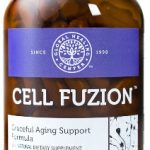
Cell Fuzion – an advanced antioxidant formula designed to protect and energize mitochondrial function and protect against DNA damage.
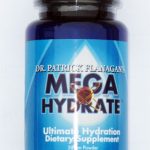
Megahydrate Powder – a powerful antioxidant and provides full-body essential hydration for optimal health and well-being.
 Super Antioxidant Protection – a powerful formula that supplies key water and fat-soluble antioxidant nutrients; by supporting the body’s major antioxidant pathways, it may protect against free radical damage and premature ageing.
Super Antioxidant Protection – a powerful formula that supplies key water and fat-soluble antioxidant nutrients; by supporting the body’s major antioxidant pathways, it may protect against free radical damage and premature ageing.
References:
- Sen C. K. ‘Wound Healing Essentials: Let There Be Oxygen’. Wound Repair Regen. 2009; 17 (1): 1–18. doi: 10.1111/j.1524-475X.2008.00436.x.
- Ohio State University Department of Internal Medicine. ‘Scientists Identify a New Role for Oxygen in Wound Healing’. https://internalmedicine.osu.edu/article.cfm?id=2229.
- Triantaphylidès C., Krischke M., Hoeberichts F. A., Ksas B., Gresser G., Havaux M., Van Breusegem F. and Mueller M. J. ‘Singlet oxygen is the major reactive oxygen species involved in photooxidative damage to plants’. Plant Physiol. 2008 Oct; 148 (2): 960-8. doi: 10.1104/pp.108.125690. Epub 2008 Aug 1.
- Chen Y., Azad M. B. and Gibson S. B. ‘Superoxide is the major reactive oxygen species regulating autophagy’. Cell Death Differ. 2009 Jul; 16 (7): 1040-52. doi: 10.1038/cdd.2009.49. Epub 2009 May 1.
- Jaimes E. A., Sweeney C. and Raij L. ‘Effects of the reactive oxygen species hydrogen peroxide and hypochlorite on endothelial nitric oxide production’. Hypertension. 2001 Oct; 38 (4): 877-83.
- Aprioku J. S. ‘Pharmacology of Free Radicals and the Impact of Reactive Oxygen Species on the Testis’. Journal of Reproduction & Infertility. 2013; 14 (4): 158-172.
- Spickett C. M, Jerlich A., Panasenko O. M., Arnhold J., Pitt A. R., Stelmaszyńska T. and Schaur R. J. ‘The reactions of hypochlorous acid, the reactive oxygen species produced by myeloperoxidase, with lipids’. Acta Biochim Pol. 2000; 47 (4): 889-99.
- Powers S. K., Ji L. L., Kavazis A. N. and Jackson M. J. ‘Reactive oxygen species: impact on skeletal muscle’. Comprehensive Physiology. 2011; 1 (2): 941-969. doi:10.1002/cphy.c100054.
- Pham-Huy L. A., He H. and Pham-Huy C. ‘Free Radicals, Antioxidants in Disease and Health’. International Journal of Biomedical Science: IJBS. 2008; 4 (2): 89-96.


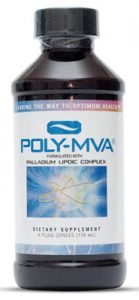
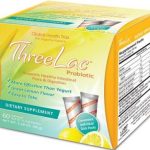
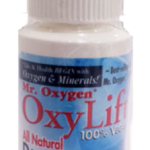

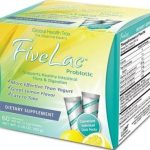
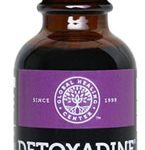
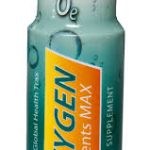
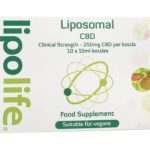
 Obviously CBD works perfectly well by itself. But CBD and Curcmin together are even better. So if you want to enhance the effects further, we recommend combining it with Curcumin which has some quite similar benefits to CBD, especially where is comes to supporting the immune system, cardiovascular health, reducing inflammation and helping with anxiety. (Neuro-chemical research has shown that Turmeric and Curcumin can increase Serotonin, noradrenaline and dopamine levels in the brain).
Obviously CBD works perfectly well by itself. But CBD and Curcmin together are even better. So if you want to enhance the effects further, we recommend combining it with Curcumin which has some quite similar benefits to CBD, especially where is comes to supporting the immune system, cardiovascular health, reducing inflammation and helping with anxiety. (Neuro-chemical research has shown that Turmeric and Curcumin can increase Serotonin, noradrenaline and dopamine levels in the brain).

